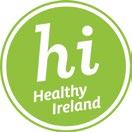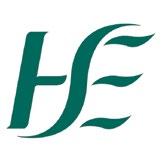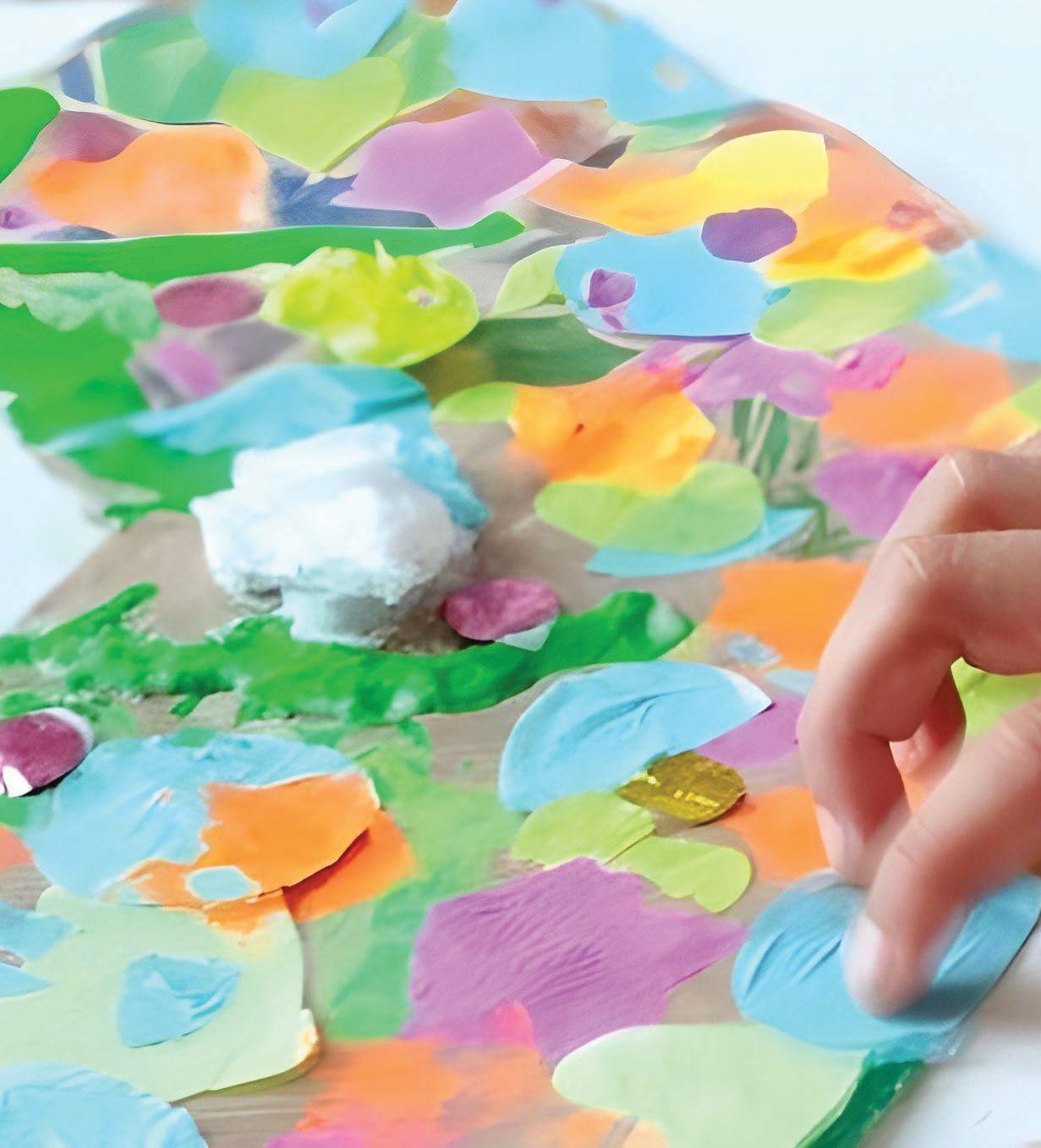

YOUTH PARTICIPATION FRAMEWORK
Youth Voice, Community and Inclusion
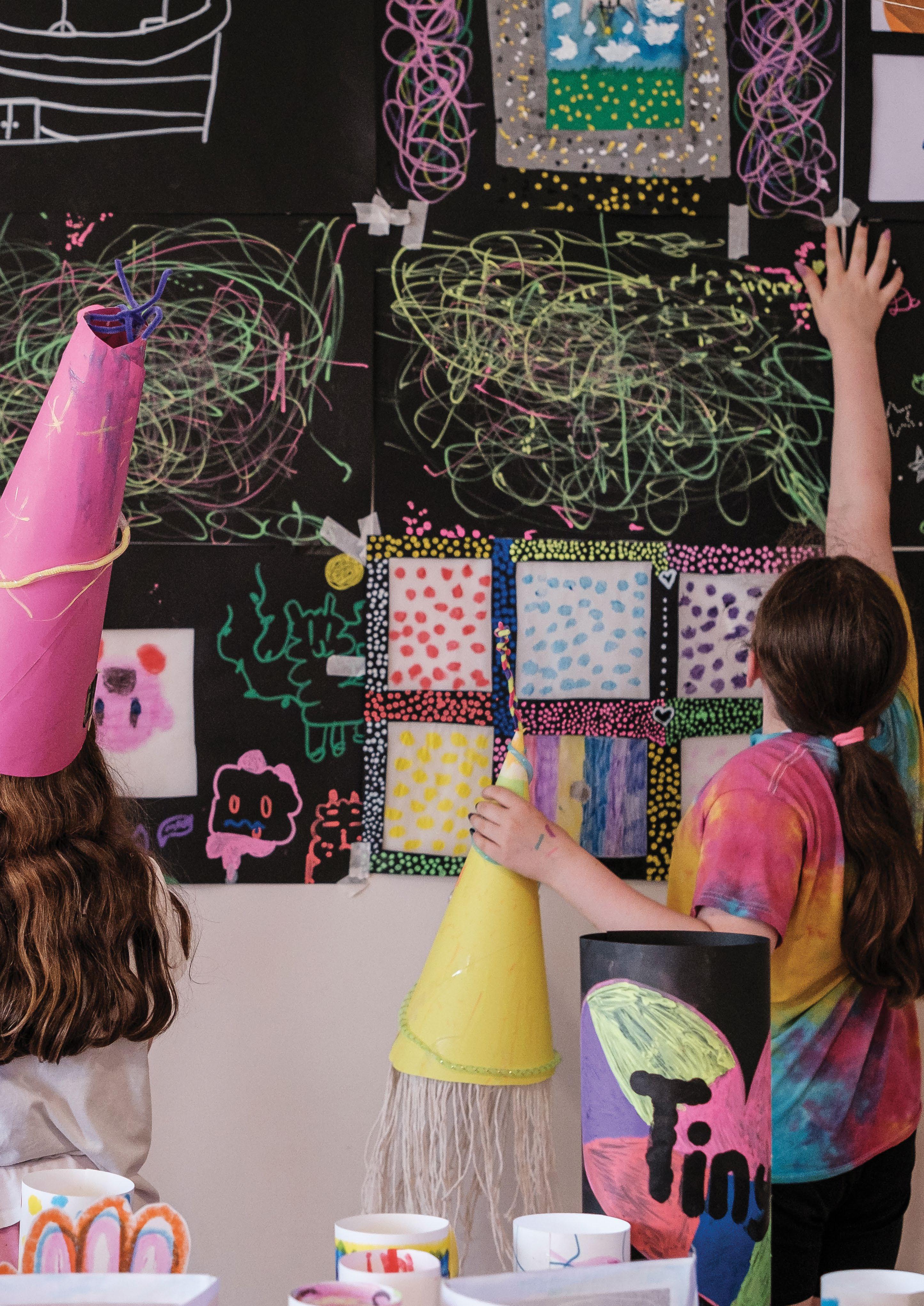
WHO IS HELIUM ARTS?
Helium Arts is an Irish charity that brings creativity and joy to children and young people aged 6-16 living with life-long physical health conditions. We offer free art workshops - in hospital waiting rooms, community settings, and online - for those with conditions such as diabetes, epilepsy, spina bifida, heart conditions, juvenile arthritis, rare conditions, and more.
Through art, participants can build confidence, make friends, and simply have fun! Our nationwide workshops are led by professional artists, supported by friendly volunteers, and include an on-site medic at every session to ensure a safe and secure environment for everyone involved.
OUR MISSION
We are working to generate creative encounters for children with life-long health conditions to improve wellbeing and creativity.
OUR VISION
An Ireland, where all children are connected to their creative powers so they can live life to the full.
MEET THE YOUNG PEOPLE WHO CO-DEVELOPED THE HELIUM ARTS YOUTH PARTICIPATION FRAMEWORK
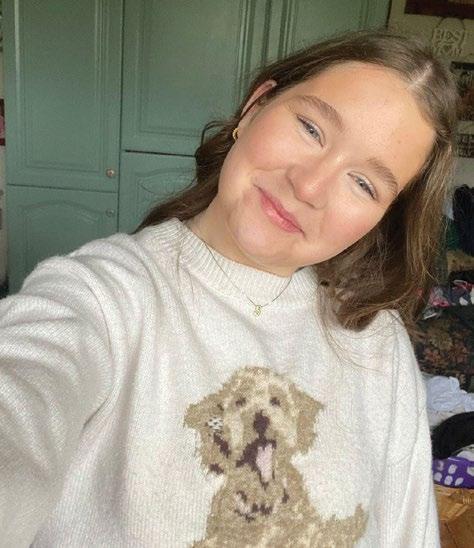
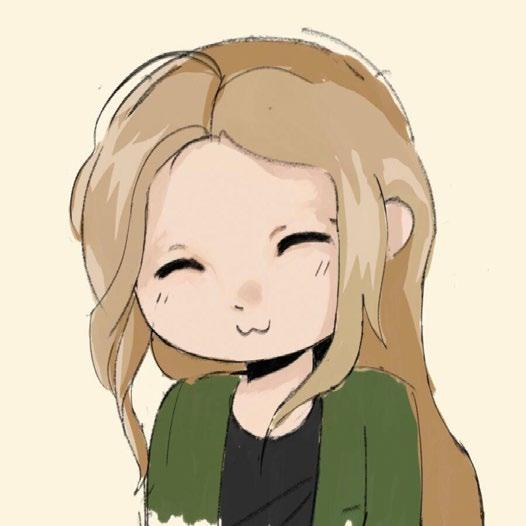
SAOIRSE O’BRIEN
My name is Saoirse and I’m 16. I’m from County Cavan. My hobbies are sewing, drama and running. I love listening to music; my favourite band is Inhaler. YAG Is a very safe and positive environment. At YAG meetings we do art but also talk about things going on in our lives and it’s a very safe space to express ourselves. I am so happy I joined YAG.
ERIC O’CONNOLL
Hi! I’m Eric, from County Galway.
I like art, especially digital mediums of art. I love game development, Vocaloid music and have a strange preoccupation with fonts and their correct use cases. I’ll also read pretty much anything with words in it.
I first found out about Helium during the pandemic, when my mam asked me to do one of their online art sessions. I kept at that until a call came out for YAG members and I jumped at the opportunity! YAG felt like a rational next step for me, I benefited from the programmes Helium offers, I want to help make sure that more kids and teens like me get to benefit too! And it certainly doesn’t hurt that the YAG is full of lovely, accepting, understanding and funny people who I have the privilege to call friends. I really feel at home here!
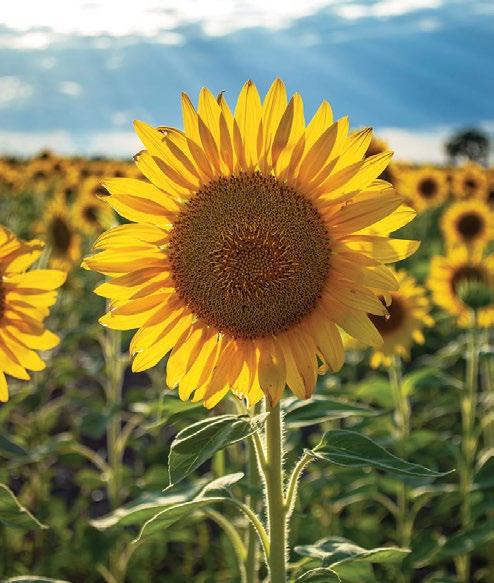
CERYS AER
My name is Cerys, and I am 22. I am from the lovely County Kerry where I enjoy nature walks (when possible). My hobbies include reading and writing. I am also passionate about language-learning which has led to a Duolingo obsession. I joined the Helium Arts Youth Advisory Group recently as I wanted to try something new and meet people. I have never been hugely interested in art, but I just thought “why not?” and have since found the YAG to be a welcoming and fun space. I’d definitely recommend it to anyone who may be considering it. You can’t go wrong!
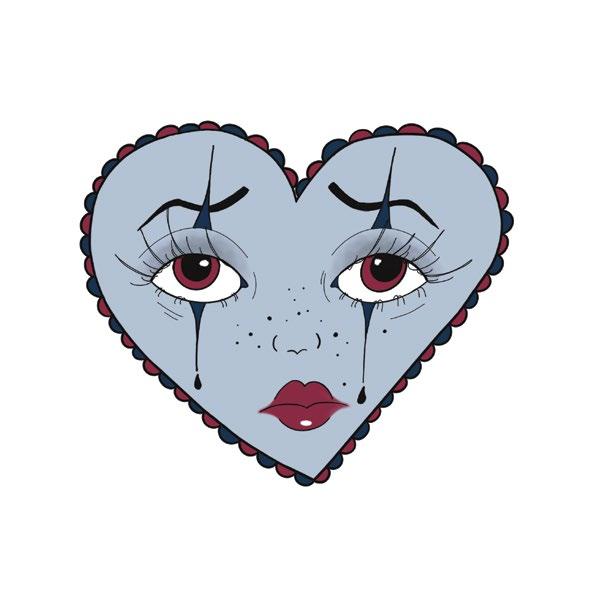
CIARA O’CONNOR
Hi, my name is Ciara I’m 22 and I live in Cork.
I seem to be a full-time hobby collector. Every few months I’m diving head-first into learning a new hobby. Currently it’s learning to do gel nail extensions. Other hobbies I love are crochet, drawing and music. I always have music playing in the background. My current favourite artists are Alice in Chains, Sleep Token and Lana Del Rey.
The current crochet project I’m working on is a hopefully beautiful white lace mini skirt. It’ll probably be 6 months’ time before I have it finished. I’ve been a member of YAG for about 5 years it’s been a wonderful experience. Everyone is so supportive and understanding. A lot of us have gone through similar experiences or can relate in some way to what someone else has been through. YAG gives us a community who understand.
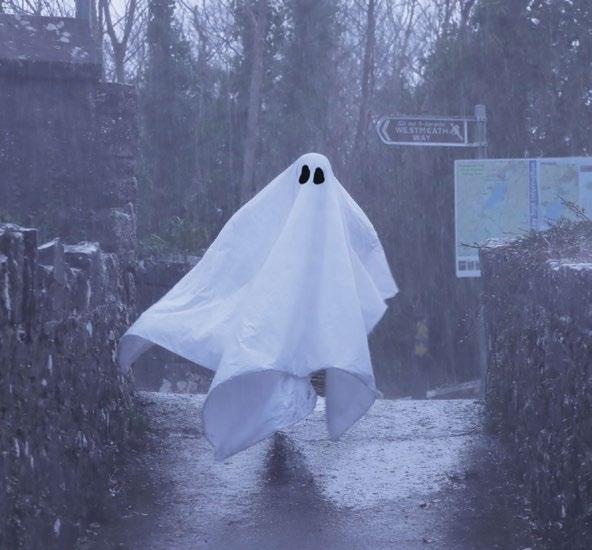
OWEN PETTIGREW
My name is Owen and I’m from Westmeath. I have multiple hobbies. My favourite is probably Dungeon and Dragons. I use it as an escape with my friends where we can be someone else for a few hours a week and forget about our problems and have some fun. I joined the YAG in 2019 after being invited to an in-person meeting at the Irish Museum of Modern Art in Dublin. I think arts and creativity are vital to my happiness. The YAG is a group of people in similar circumstances with different illnesses. The best thing the YAG does is help us connect and meet new people and form friendships. I think the YAG is great. It can really help young people to feel like they contribute to Helium Arts in a beneficial way after their program finishes. That’s special and a wonderful thing.
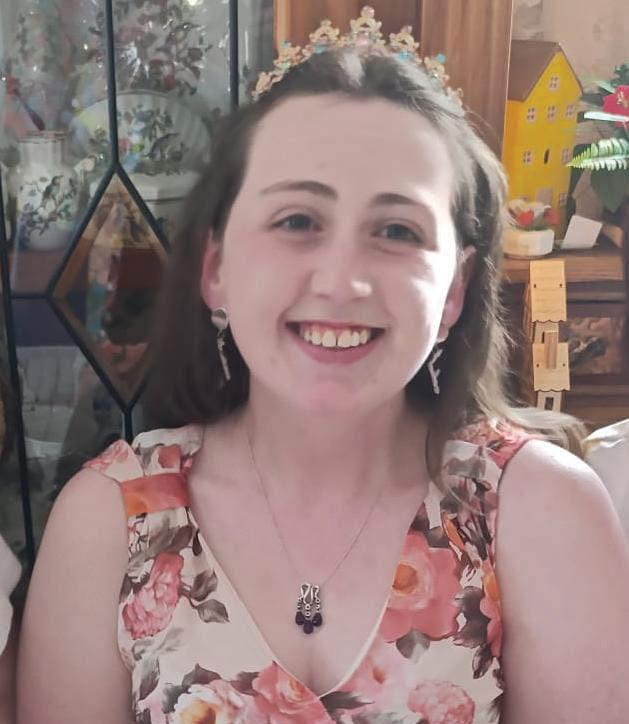
FRANCHESCA BYRNE O’MALLEY
Hi, my name is Franchesca I’m 22 and I live in Co. Louth.
I love animals and music. I love animals so much I even decided to study them. I’m currently in my first year hoping to make it to the second. If I’m lucky I’ll become a dog groomer. Over the past few years, I have gone through a lot, and my animals, family and my music got me through it. I love a good cup of tea with a bit of milk. Doesn’t really matter about the mug as long as the tea is in it. My family also love a good cup of tea and some gossip, so many kettles are boiled. It’s a sign at home when the teapot is on the table, tea is poured out and that’s when the day’s news is shared.
I would describe YAG as open, fun, spontaneous, creative and good craic. YAG is definitely one of the best groups I have been involved with. I think arts and creativity can offer to young people a way of expression and respite. Art and creativity stimulates the mind, and you don’t have to be Vincent Van Gogh because it’s about the process. Sometimes when you’re sick at home or in hospital, all you want is to go home or get better. I find art can give you a lift and give you a chance to express yourself.
WHAT IS A YOUTH PARTICIPATION FRAMEWORK,
WHO’S IT FOR AND WHY
DO WE NEED IT?
A framework for youth participation is important because we live in a society which often favours the voices of adults above young people. Young people are not treated equally because of their age and are often left on the margins of political and civic decision-making. Further disempowerment is experienced by marginalised young people, whether due to race, ethnicity, ability, gender, sexuality or socioeconomic background. Young people living with life-long physical health conditions are often left out of decision-making processes due to spaces being inaccessible or decision-making processes not considering access needs. Yet young people are experts in their own lives, and we need to meet them where they are at.
At Helium Arts we believe in being proactively inclusive of all young people, and so our Youth Participation Framework is a “How to” guide and plan for how we include young people in decision-making, support and elevate young people’s voices and dismantle barriers to participation for all young people.
This framework is for young people, Helium Arts’ artists and staff, professional practitioners and decision-makers to use. It sets out the key values of participation that are important to our young people, the importance of participation for young people with life-long physical health conditions and a roadmap of how Helium Arts will develop and deepen our practice of youth participation over the next three years.
The framework is rooted in a rights-based model of participation known as the Lundy Model. The Lundy Model maps out a young person’s right to participation, as laid down in Article 12 of the United Nations Convention on the Rights of the Child. The model also includes a one-page checklist for practitioners.
The Helium Arts Youth Participation Framework has been co-produced with Helium Arts’ young people and is supported by the Arts Council of Ireland.
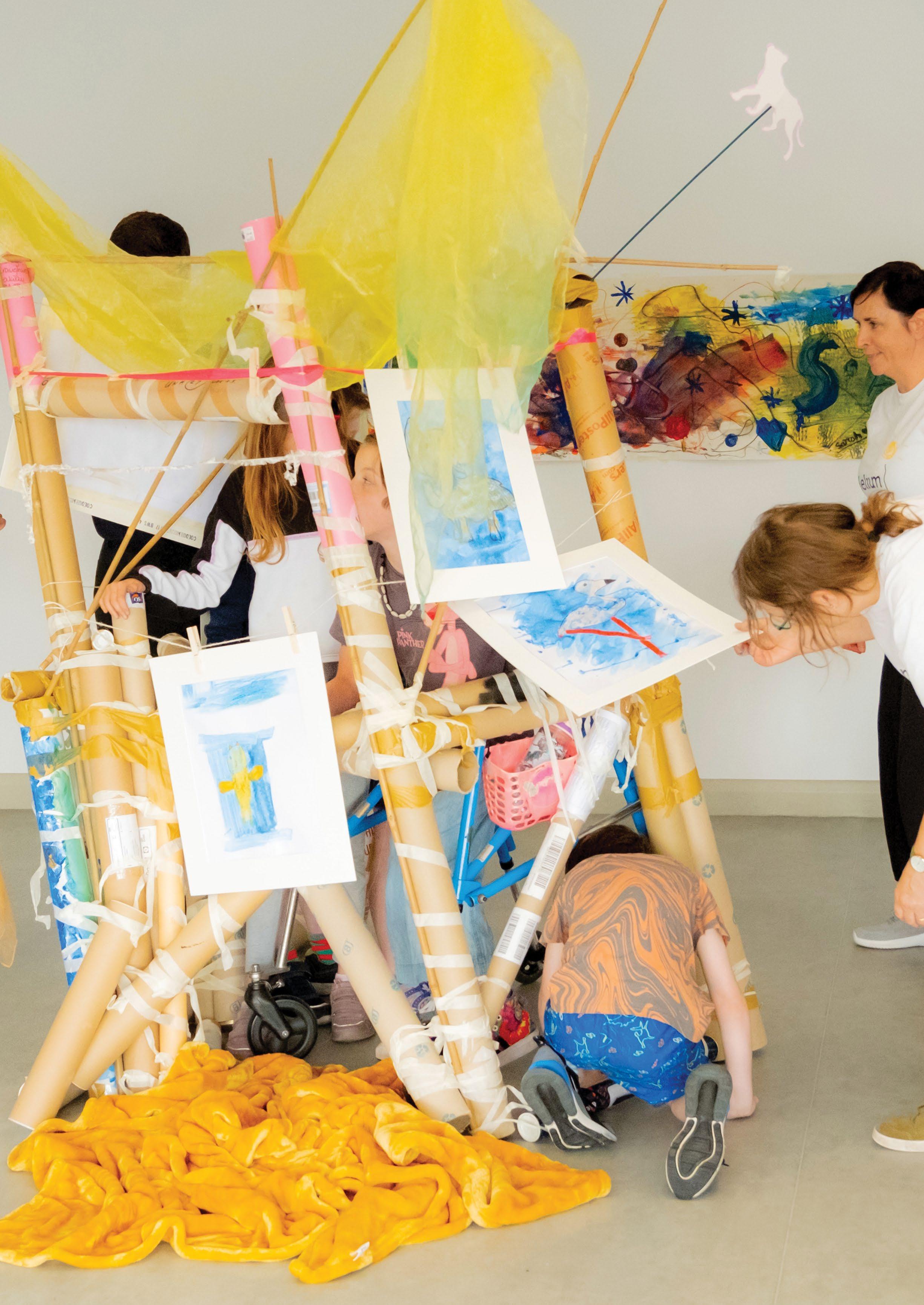
A MESSAGE FROM OUR CEO
Youth participation, as defined by the National Youth Council of Ireland, is young people having the rights, skills, confidence, support, and opportunities to influence decisions affecting them, and to help build a more just and equal world. For participation to be truly meaningful, it must be inclusive of marginalised young people, including those with life-long physical health conditions, who have statistically lower participation rates in social life due to the barriers they face.
As the national children’s health and arts charity, Helium Arts engaged the participation of 5,500 young people with life-long health conditions in 2024 - a number that continues to grow. These young people are at the core of our work, and we are committed to deepening the quality and inclusiveness of their participation.
As part of our 2023–2027 Strategic Plan, we pledged to “work with children and young people to advocate for the child’s right to participate in culture.” In 2023, we brought this goal to life by hiring a Youth Participation and Engagement Coordinator to lead the development of a new Youth Participation Framework - one shaped by the lived experiences of the young people we serve.
This process included a literature review and an internal assessment of current youth engagement practices, in collaboration with staff and our young people, including our Youth Advisory Group. We discovered a shared value system across the organisation that supports youth participation and youth voice, but also recognised the need for more inclusive and integrated practices, particularly regarding how we engage our Youth Advisory Group.
We asked our children and young people what participation means to them as individuals living with physical health conditions. Their insights shaped this new framework, which we hope will not only guide our internal processes but also serve as a resource for other organisations working at the intersection of health and the arts. Above all, this framework is our commitment to ongoing reflection and improvement. We want youth voices to be heard - by us and by those in power. As our young people have expressed, youth participation brings Community, Voice, and Solidarity. I look forward to realising our vision for 2028 and believe that amplifying young voices will make all our hearts beat stronger.
WHAT IS YOUTH PARTICIPATION
Youth participation can be defined by how much influence young people have on the decisions that affect their lives. It is a core principle of the UN Convention on the Rights of the Child (United Nations, 1990). The UNCRC acknowledges children and young people as “rights holders” and as “citizens of today”, (United Nations, 1990) The convention recognises young people’s autonomy and capacity to engage in decision-making which affects their lives, and names participation as a right.
This recognition of youth participation as a right has influenced the practice and policy of youth participation around the world. In Ireland, the Participation of Children and Young People in Decision-Making: Action Plan 2024-2028 states that young people are experts in their own lives and have a right to voice and participation (Dept of Children, Equality, Disability, Integration and Youth, 2024).
Youth Participation is also recognised as a right within the policy context of the Arts and Health sectors in Ireland. In their Policy for Children and Young People, the Arts Council emphasises the right of young people to participate in the arts, express themselves creatively and have their voices heard in the development of arts programmes (Arts Council, An Chomhairle Ealaíon, 2023). The Health Service Executive also recognises the importance of youth participation in healthcare settings. The National Healthcare Charter for Children and Young People states that every child and young person has the right to participate in decisions about their healthcare in a way that is suitable to their age and understanding (National Healthcare Charter for Children).
There are different levels of youth participation ranging from young people being informed of an initiative which affects them, to consultation, to adult/youth collaboration to youth-led decision-making.
When we explored Hart’s Ladder with YAG, the group leaned towards participation above consultation as the process which really values young people’s voices:
“Consultation is when they just ask us what we think, and participation is when we’re actually involved in the process”
- Ciara, YAG Member
“Consultation is a single act, and participation is a more involved and ongoing process.”
- Cerys, YAG Member
HART’S LADDER OF YOUTH PARTICIPATION LAYS OUT FOR US THESE LEVELS:
“It’s (participation) about speaking truth to power.”
- Eric, YAG Member
At Helium Arts we are working to improve our youth participation practice all of the time. We believe that youth participation is a collaborative process rooted in relationships and mutual respect. In meaningful youth participation, we work with young people, and not for them. And with the help of the framework, we aim to have a more robust and deeper practice of youthinitiated work in partnership with adults across the organisation by the end of 2028.
TAKING THE POWER BACK:
The importance of Youth Participation for Young People with Life-Long Physical Health Conditions
Young people with life-long physical health conditions and disabled young people are among the most marginalised groups in Irish society (UNICEF 2013). Young people with lifelong physical health conditions are also less likely to engage in decision-making that affects their lives compared to young people with no health conditions (Hub na nOg, 2024). This can be for a number of reasons including decisionmaking opportunities not being accessible, young people’s autonomy not being fully respected, or lack of understanding by adults on the needs of young people with life-long physical health conditions.
One of the key findings of our research alongside the Helium Arts Youth Advisory Group is that the young people often feel disconnected and without voice due to illness. In many aspects of the young people’s lives, there is no thought given to accessibility, and so real participation is not possible.
“There’s not many other group spaces I can go to because rest and other access needs aren’t even considered.”
- Cerys, YAG Member
The YAG members also felt that their voices are not always listened to in health care settings.
They speak about the importance of getting to share their voice and opinions in Helium Arts settings and through creative expression because of this:
“Everyone is sound and friendly in YAG. It’s safe to be yourself.”
- Owen, YAG Member
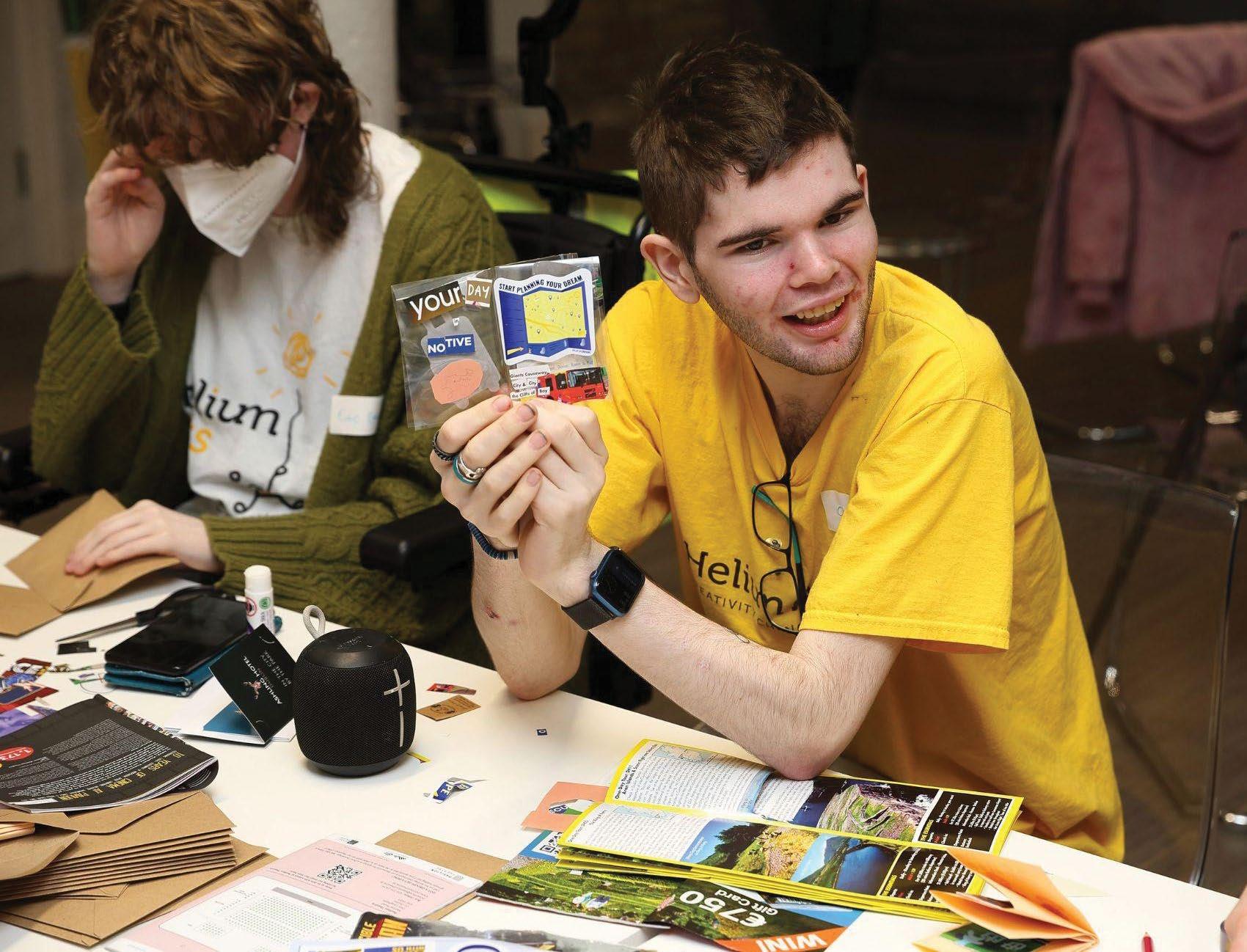
“Sometimes the doctors speak to your parents and not you.”
“We get to get our voice out there through art.”
- Saoirse, YAG Member
“There’s empathy in YAG, instead of sympathy.”
- Ciara, YAG Member
These insights from YAG are backed up in research and policy. Cahill et al. state that it is often assumed in healthcare settings that young people who are not well have less capacity to make decisions about their needs (Cahill et al., 2019); or that young people are often not given the opportunity to make decisions about their care, (Davies C, Waters D, Fraser J., 2024).
- Young Person in Youth Voice Focus Group, age 15.
The National Irish Healthcare Charter notes that children and young people experience illness and disability differently to adults and are vulnerable due to their developmental age. This makes it all the more important that their voices and rights are included in decision-making about their care, (National Healthcare Charter for Children and Young People).
So, we know young people with life-long physical health conditions are often excluded from decision-making which affects their lives. Yet if these young people are given the opportunity to be active agents in their own lives, invited to be part of needs analysis, problem solving and sharing their expertise, they bring rich knowledge
and experience to the table. This helps the services designed to support them to not only improve but be rooted in inclusion and respect.
And participation is not only important for how we better support young people with lifelong physical health conditions, it’s also very important for their wellbeing, confidence and personal development. In the Helium Arts Social Return on Investment Report 2021 we can see that participation in Helium Arts programmes increased young people’s wellbeing, confidence and ability to deal with their health condition, (Helium Arts, 2021).
YAG members at the YAG Zine Launch in February 2025
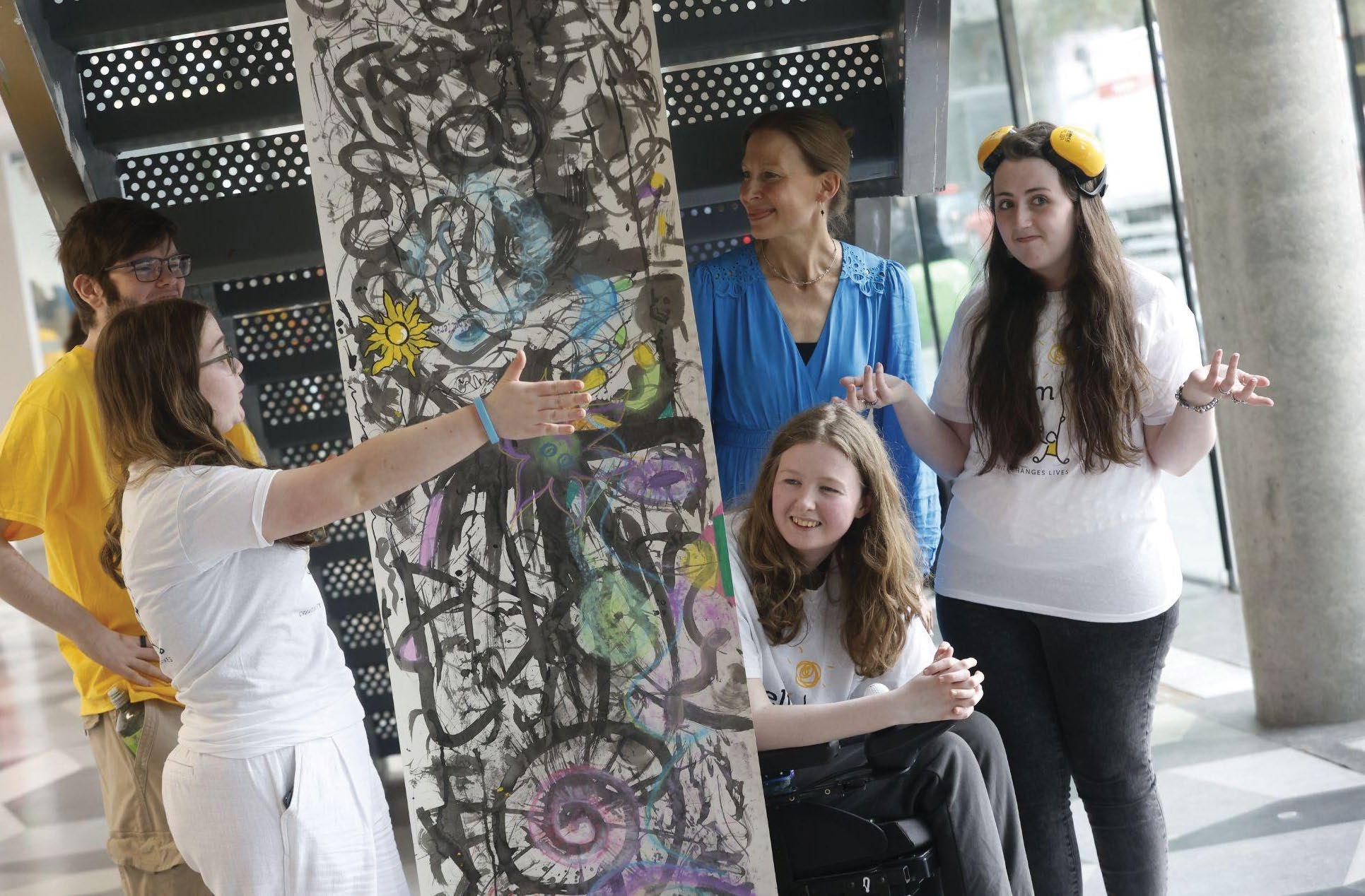
PARTICIPATORY RESEARCH WITH YOUNG PEOPLE
The Helium Arts Youth Participation Framework was developed over eighteen months alongside our fantastic Youth Advisory Group (YAG). This was a participatory and creative research development process which led us to the Framework we have now! Participatory Research (PAR) is research with young people, rather than on or about them. PAR is rooted in a rights-based approach and aims to support youth agency, voice and empowerment, (Neumeister, E. et al. 2024).
The Helium Arts Youth Participation Coordinator and YAG Artist worked alongside YAG in monthly workshop sessions to explore what youth participation means and how we can improve youth participation in Helium Arts.
We started this process by exploring what the group already does in their lives that is considered youth participation, such as being part of a community group, campaigning for a cause, advocacy, voting, protesting etc. This gave the group the opportunity to step into their shared knowledge and experience.
We looked at Hart’s Ladder of Participation, the United Nations Convention on the Rights of the Child, the Lundy Model and mapped out youth participation in existing Helium Arts structures and practice. We then co-wrote a survey with YAG exploring what youth participation meant for other young people. This was shared with young people across the country who have engaged with Helium Arts and young people outside of the organisation who live with a life-long physical health condition.
Some of the key generative themes that came up again and again from both our YAG sessions and the survey are:
The importance of voice and being listened to as a young person with a life-long physical health condition
The necessity of accessibility and accessible spaces for young people
The value of community in supporting voice and participation
significance of inclusion and diversity in youth participation
LIMERICK AND CORK CREATIVE YOUTH VOICE FOCUS GROUPS
The Youth Participation Coordinator carried out two creative focus groups with younger Helium Arts members. These took place in Limerick and Cork and were done in collaboration with Helium Arts Artists. The focus groups explored the topics of youth voice, participation and rights with Helium Arts participants - young people aged 8-12 and 13-16.
At the Limerick focus group, we introduced the concept of children’s rights and participation to young people aged 8-12. We created space for the young people to create shadow puppet characters and scenes which explored the rights they were passionate about and what participation meant to them. Key findings from the Limerick Focus Group are the importance of accessibility and community for the young people and equal access to healthcare. You can watch a video of our Limerick focus group here:
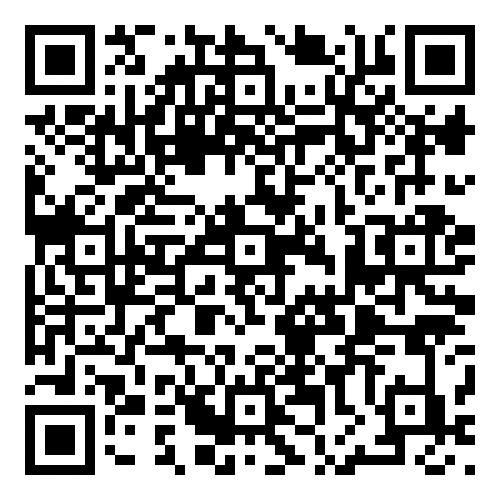
At the Cork workshop we worked with young people aged 13-16 using creative games, a collaborative banner and zines for them to express their experiences of participation, and what they believe the necessary conditions for youth participation are.
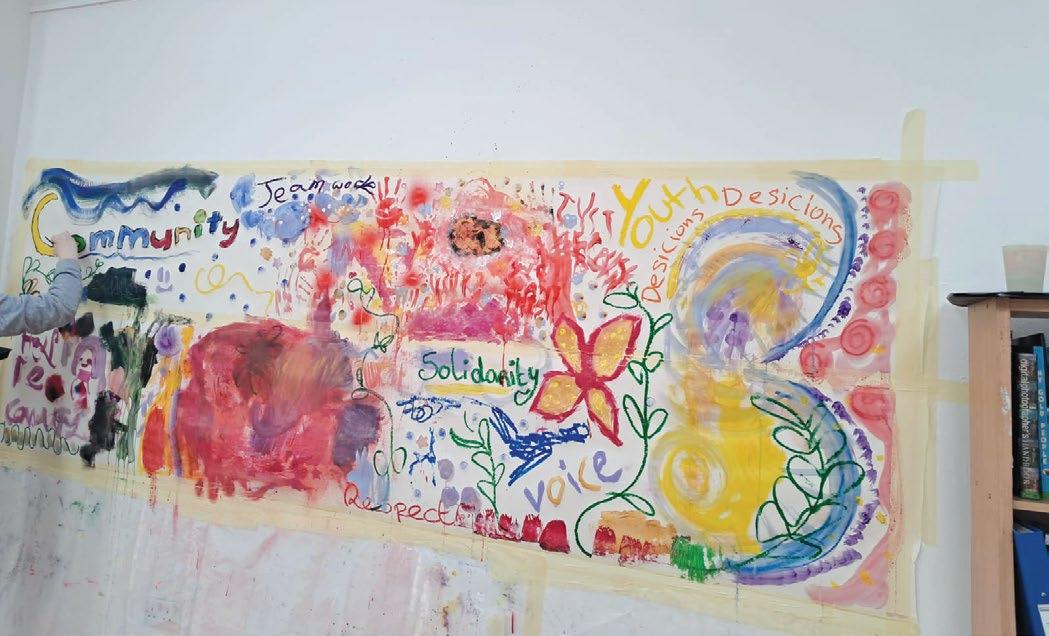
Collaborative banner made by participants of Limerick Youth Voice Focus Group on the theme of ‘Youth Voice’
The
DREAM BIG WITH YAG
Finally, with YAG we co-created a Dream Big activity of our ideal practice of youth participation in Helium Arts. This was done through exploring each aspect of the Lundy Model; Space, Voice and Influence and looking at what the young people’s ideal/dream iteration of all three would be.
Out of the Dream Big we came to understand what was most important for meaningful youth participation and this informed the framework’s key values. The actions suggested by YAG in Dream Big then came to inform the roadmap of our Youth Participation Framework.
The key values of our framework as well as the roadmap came from the voices, minds and hearts of the wonderful young people we work with!
CONSULTATION WITH THE HELIUM ARTS TEAM
Image from Dream Big session with YAG
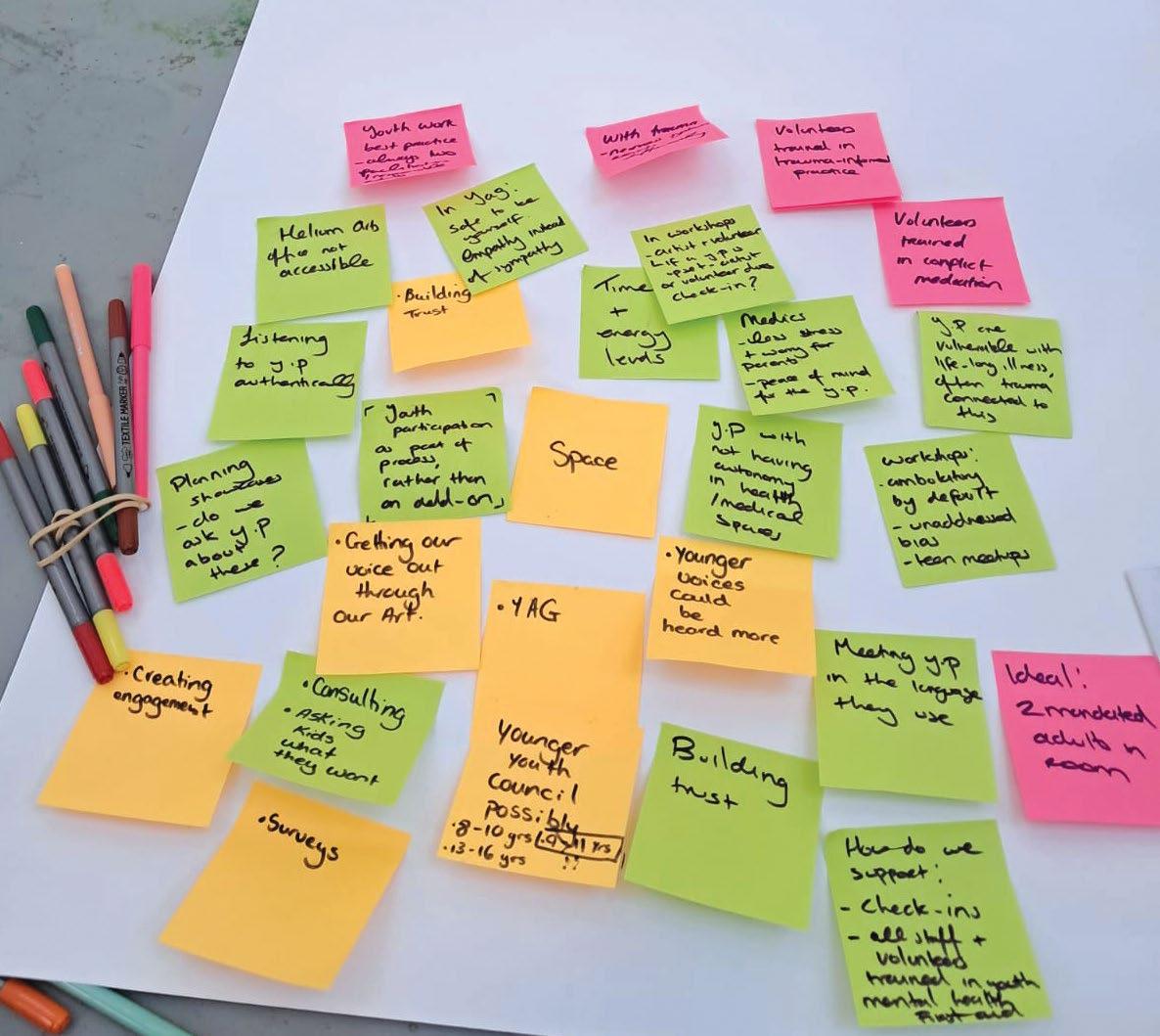
During the research and development stage of the Youth Participation Framework, the Youth Participation and Engagement Coordinator also consulted with Helium Arts Staff to review existing practices and understanding of youth participation in the organisation. This review involved a survey sent to the entire Helium Arts team as well as a reflective consultation session. In this session we used games and group work activities to explore how the team understood youth participation, how we practiced it in Helium Arts and how we could improve.
From the data gathered through the survey and consultation session we learned that Helium Arts team members have an understanding of youth participation based on shared values of youth voice, young people being involved in decisionmaking which impacts them, young people’s input into processes from the beginning stages and young people contributing to society.
The needs identified by the team for how we improve on youth participation in Helium Arts were:
• Engage in inclusive practice and equality training to improve how we reach and support marginalised young people
• Improve how we understand the needs of our young people - through continuous feedback, and supporting youth voice
• Introduce pathways for young people to input into programme development from beginning to end stages
The information gathered from the Helium Arts team during this review fed into the development of the Youth Participation Framework roadmap as developed alongside YAG.
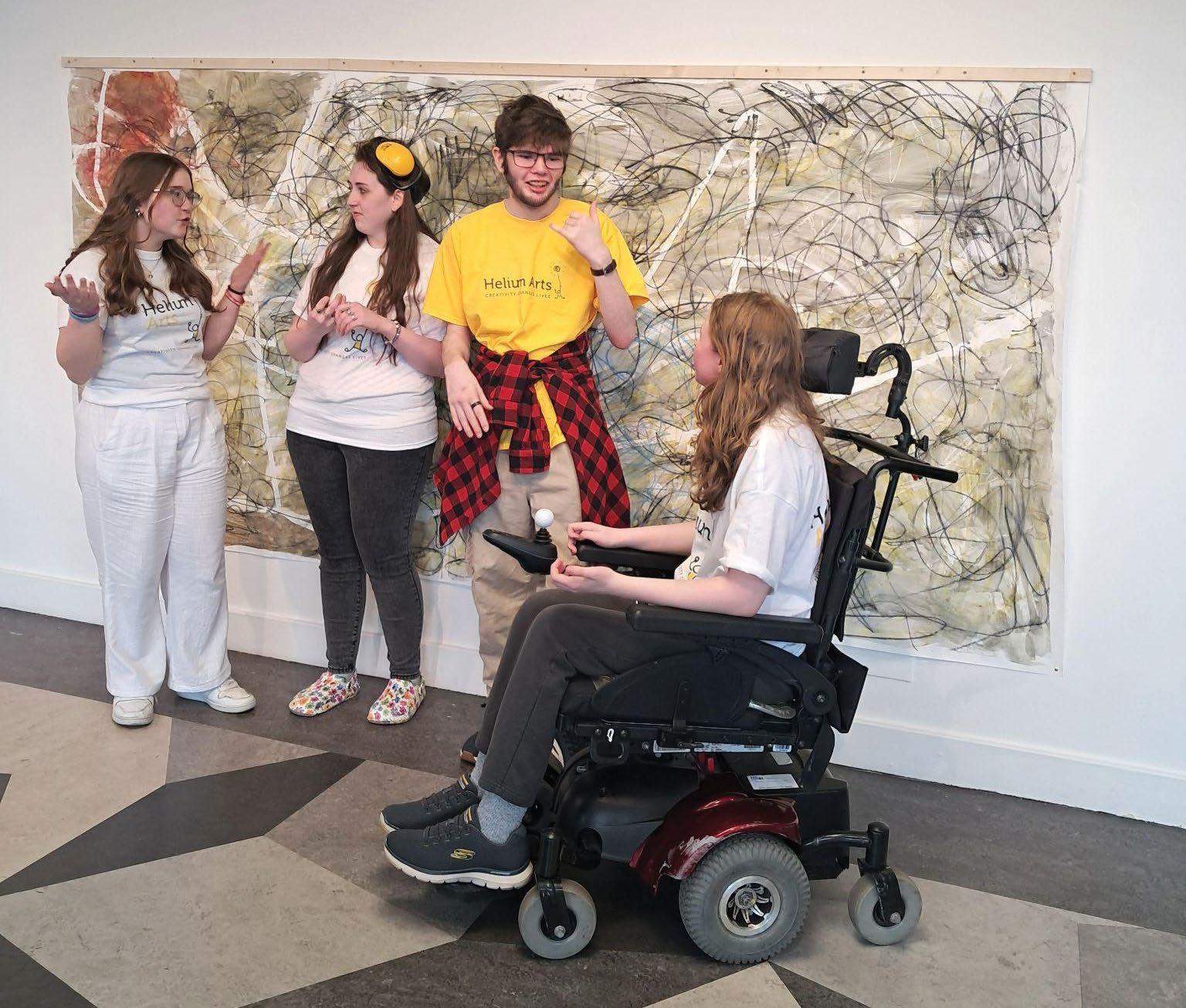
WHAT ARE THE BENEFITS FOR YOUNG PEOPLE WITH LIFE-LONG HEALTH CONDITIONS IN BEING INVOLVED IN DECISIONMAKING?
YOUTH PARTICIPATION FRAMEWORK VALUES
The four key values of this framework came out of monthly participatory research development sessions with our Youth Advisory Group. They are:
I have the right to feel empowered at Helium Arts
YOUTH PARTICIPATION RIGHTS IN HELIUM ARTS
In order to ensure young people’s voices are heard and included, we worked with YAG and our focus groups to devise a list of rights all young people who take part in Helium Arts activities have. The Youth Participation Rights in Helium Arts are:
I have the right to shared community and friendships in Helium Arts 1. 3. 4. 2. 7. 9. 10. 8. 5. 6.
I have the right to equal access to Helium Arts activities, no matter my race, ethnicity, gender, sexuality, class or religion
I have the right to participate fully in Helium Arts activities and to not participate when I choose
I have the right to decide where, with who and how my art is shared
I have the right to have my access needs met at Helium Arts activities
I have the right to be treated with respect by all Helium Arts team members
I have the right to creative expression and fun at Helium Arts activities
I have the right to have my voice listened to in decision-making that directly affects me
I have the right to know where my opinion goes when shared with Helium Arts and beyond, and how it makes an impact
INTRODUCING THE LUNDY MODEL OF CHILD PARTICIPATION
WHAT IS THE LUNDY MODEL?
The Lundy Model is a model of Child and Youth Participation which was developed by Professor Laura Lundy, Professor of International Children’s Rights at the School of Education, Queen’s University, Belfast. The Lundy Model was nationally endorsed by the Irish Department of Children, Equality, Disability, Integration, and Youth in both the National Strategy on Children and Young People’s Participation in Decision-Making 2015 –2020 (DCEDIY, 2015) and the National Framework for Children and Young People’s Participation in Decision-Making in Ireland, (DCEDIY, 2021). The Lundy Model is based on the UN Convention on the Rights of the Child and maps out practical steps for young people’s participation in decisionmaking. The model is based on four key concepts:
1. SPACE
That young people need a safe and welcoming space to express their views and opinions
2. VOICE
Adults need to encourage and support young people to express their thoughts and feelings through a variety of mediums
3. AUDIENCE
Adults and decision-makers should actively listen to the views of young people
4. INFLUENCE
The views and opinions shared by young people should have an impact on decision making.
HOW IS THE LUNDY MODEL CURRENTLY USED IN HELIUM ARTS?
The Lundy Model is currently used by all Helium Arts artists in our creative art spaces with young people including in Outpatient and Community settings. We continuously gather opinions and feedback from our young people informally in workshop settings, formally through feedback surveys, evaluation and with our Youth Advisory Group. The input our young people share with us directly impacts our programme.
We want to continuously improve on how we centre the voices of young people in our work, which is why our Youth Participation Framework will be rooted in the Lundy Model.
LUNDY MODEL
This model provides a pathway to help conceptualise Article 12 of the UNCRC. It focuses on four distinct, albeit interrelated, elements. The four elements have a rational chronological order.
SPACE
Children and young people must be given safe, inclusive opportunities to form and express their views
VOICE
Children and young people must be facilitated to express their views
AUDIENCE
The views must be listened to
The views must be acted upon, as appropriate
THE LUNDY MODEL CHECKLIST
• How did you ensure that children and young people were involved as early as possible?
• How was their involvement sustained?
• How were those who are directly affected by the topic involved?
• Did you make a clear list of the topics on which you want to hear the views of children and young people?
• How did you ensure that the key focus of the process stayed on the topics you identified?
• How did they know that participation was voluntary and they could withdraw at any time?
SPACE AUDIENCE
• What steps were taken to ensure the process was inclusive and accessible?
• How were they supported to feel safe and comfortable expressing themselves?
• What support was provided to those who became anxious, upset or uncomfortable?
VOICE
• How did you support them to give their own views, while including age-appropriate and accessible information?
• How did you ensure that they were given a range of ways to express themselves that best suited their needs and choices?
• How did the process allow them to identify topics they wanted to discuss?
• How did children and young people know to whom, how and when their views would be communicated?
• How did you show that you were committed to being informed and influenced by their views?
• How did you identify and involve relevant decision-makers (those responsible for influencing change)?
• How and when was a report/record and a child or youth-friendly summary of their views compiled?
• How did you ensure that they were given an opportunity to confirm that their views were accurately recorded?
• What plans were put in place to support children and young people to play a role in communicating their own views?
INFLUENCE
• How were children and young people informed about the scope they have (including the limitations) to influence decision-making?
• How were they given age-appropriate and accessible feedback at key points during the development of a service or policy?
• What did you do with their views?
• How were they given age-appropriate and accessible feedback explaining how their views were used and the reasons for the decisions taken, in a timely manner?
• How did you ensure that they were given opportunities to evaluate the process throughout?
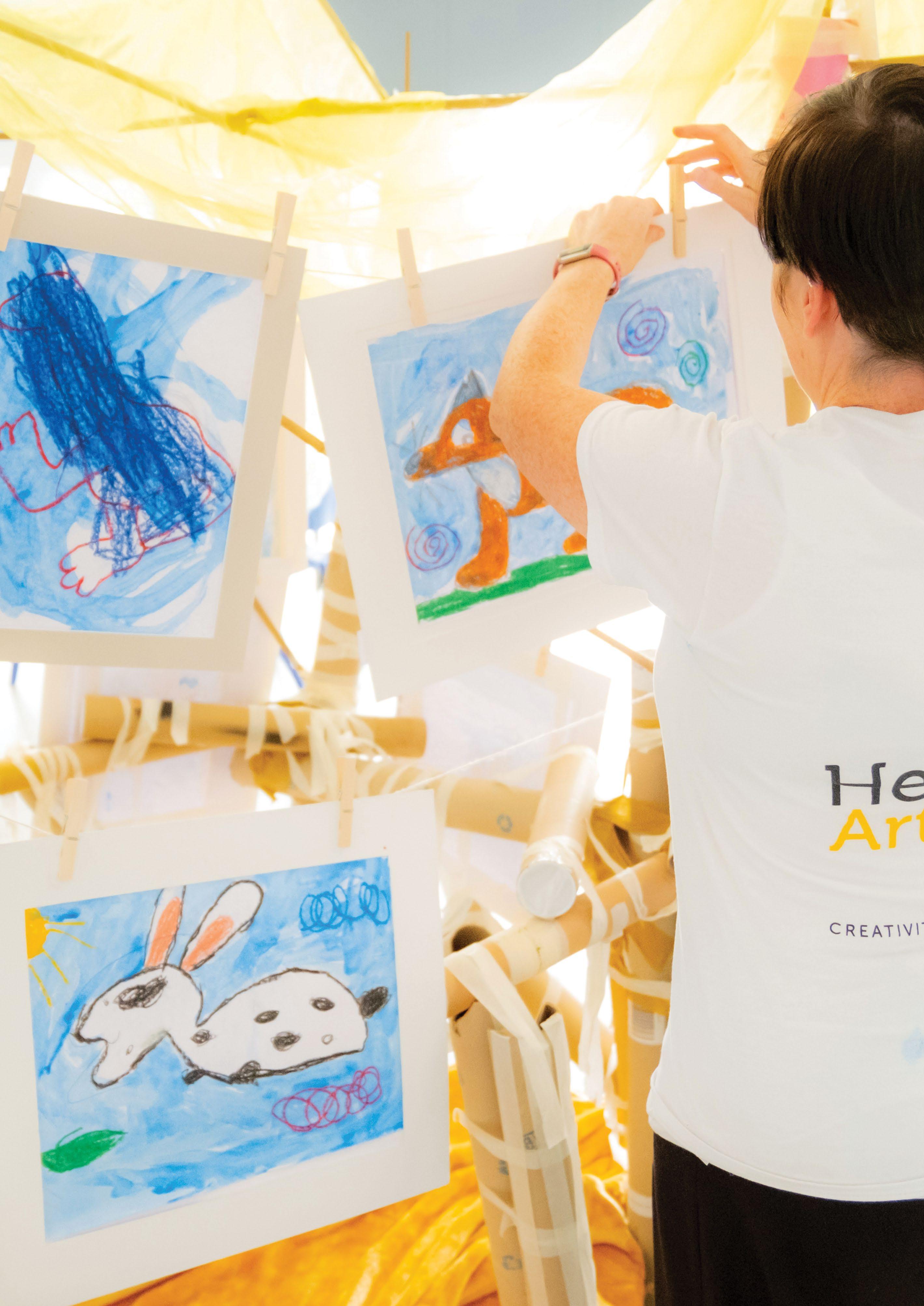
OUR ROADMAP
2025
IMPROVING YOUTH PARTICIPATION AND
INCLUSION IN HELIUM ARTS
• Launch the Helium Arts Youth Participation Framework
• Train all Helium Arts staff in youth participation
• Recruit and establish new Youth Advisory Group of 13-16-yearolds, inclusion and diversity centred in recruitment and outreach process
• Establish the Helium Arts Alumni Group, and transition of older YAG members to Alumni
• Train all Helium Arts staff and artists in trauma informed practice with focus on medical trauma
• Train all Helium Arts artists and staff in equality, intercultural and inclusive practice
• Support member of Alumni Group to sit on Helium Arts Board
• Facilitate annual focus groups with 8-12s and 13-16s reviewing youth voice and participation in Helium Arts
• Support all Helium Arts staff to root annual planning in youth participation values and practice
DEEPENING PARTICIPATION PATHWAYS
• Establish Helium Arts Leadership Training Programme for young people
• Introduce paid internship roles for young people within Helium Arts
• Support Alumni and YAG to recruit and train new members
• Plan and run annual National Youth Forum for children living with life-long health conditions
• Support Alumni and YAG groups to co-deliver annual focus groups with 8-12 and 13-16-yearolds reviewing youth voice and participation in Helium Arts
• Evaluate progress of Helium Arts Youth Participation Framework and develop a new framework alongside YAG and Alumni groups
2028
Facilitate annual Dream Big Planning Day between Helium Arts Staff, YAG and Alumni
Evaluate: Track impact and influence throughout 2025-2028
LOOKING OUTWARDS: YOUTH VOICE BEYOND HELIUM ARTS AND ADVOCACY YOUTH EMPOWERMENT: BUILDING SKILLS AND CAPACITY
• Support YAG members to develop presentation, public speaking and advocacy skills
• Train Helium Arts Artists in Youth Participation
• Support Alumni and YAG members to be part of forums across the youth, health and arts sectors which advocate for young people with life-long health conditions
• Support YAG member to sit on Helium Arts Board
• Identify gaps and failings to include young people in policy and legislative development in arts and health sectors and advocate to directly involve young people in these
• Facilitate annual focus groups with 8-12 and 13-16-year-olds reviewing youth voice and participation in Helium Arts
• Plan and run the first National Youth Forum for young people with life-long health conditions alongside YAG and Alumni Groups
• Facilitate and support youth led campaigning - chosen and organised by Alumni and YAG with guidance of Youth Participation and Engagement Coordinator
• Establish a Youth Council for Helium Arts youth participants engaged through Inclusion Health clinics
• Train Alumni and YAG members in facilitation skills
• Plan and run annual National Youth Forum for young people living with life-long health conditions
• Facilitate annual focus groups with 8-12 and 13-16-year-olds reviewing youth voice and participation in Helium Arts
EVALUATION
An ongoing evaluation process throughout the roll out of the Youth Participation Framework Roadmap will keep Helium Arts as an organisation accountable in our commitment to youth voice and participation.
WHAT WILL BE MEASURED IN OUR EVALUATION?
OUR ROADMAP
To support us to evaluate our commitment to the Youth Participation Framework and our progress, we will track the following outcomes through an Outcomes-Based Accountability Framework:
• Young people engaged with Helium Arts feel their voices are listened to, respected, and that they can contribute to decision-making which affects them
• There is an understanding of and commitment to youth participation in practice across all levels of the organisation including the Senior Management Team, Artists, Development Team and the Helium Arts Board
• There is significant confidence building in young people, shown through engagement in regular activities, expressing views and opinions, sharing interests, taking risks and engaging in new opportunities
• Young people who engage with Helium Arts experience increased wellbeing, confidence and a sense of belonging through participation
• Members of the Helium Arts YAG and Alumni groups have developed skills in awareness and analysis of the barriers young people face in participating in the arts, and are socially engaged, contributing to their communities
• Members of YAG and the Helium Arts Alumni group have gained the skills and knowledge to engage in youth-led adult partnership decision making and engagement
• Helium Arts staff are trained annually to support their practice of youth participation
HOW WILL WE EVALUATE?
We will carry out evaluation by measuring process, progress and outcomes throughout each year. This will allow opportunity for reflection, learning and improvement in an ongoing process. We pledge to carry out our evaluation using four touch points of engagement with young people:
1. Reflective workshops with our YAG and Alumni Groups twice a year
2. Participant surveys with our young people
3. Youth Voice Creative Focus Group with 8-12s and 13-16s each year
4. Dream Big Reflection and Planning Workshops between YAG, Alumni and Staff each year
We also pledge to root our evaluation process in the Lundy Model and keep young people informed as to where their feedback goes and how it influences decision-making.
The feedback and information we gather will help us to keep track of how well we are implementing the Youth Participation Framework values as well as our roadmap.
REFERENCES
1. Arts Council of Ireland, An Chomhairle Ealaíon, (2023) Policy Document - YPCE 2023
2. Cahill, Helen, Wyn, Johanna & Borovica, Tamara (2019) ‘Youth participation informing care in hospital settings’, Child & Youth Services, 40:2, 140-157)
3. Davies C, Waters D, Fraser J. (2024) ‘Factors that support children and young people to express their views and to have them heard in healthcare: An inductive qualitative content analysis’, Journal of Child Health Care.
4. Dept of Children, Equality, Disability, Integration and Youth, (2024) Participation of Children and Young People in Decision-making Action Plan 2024-2028.
5. Dept of Children, Equality, Disability, Integration and Youth, (2021) The National Framework for Children and Young People’s Participation in Decision-Making in Ireland
6. Dept of Children, Equality, Disability, Integration and Youth, National Strategy on Children and Young People’s Participation in Decision-Making 2015 – 2020
7. Hart, R. A. (1992) Children’s participation: From tokenism to citizenship. Florence, Italy: United Nations Children’s Fund International Child Development Centre.
8. Helium Arts, (2021) Helium Arts Social Return on Investment Report 2021
9. Hub na nOg, (2024) Report on the Consultation with Disabled Children and Young People on their inclusion in Decision-Making
THANKS AND ACKNOWLEDGEMENTS
There were many people who made the Helium Arts Youth Participation Framework possible.
Heartfelt and immeasurable gratitude goes to each member of the Helium Arts Youth Advisory Group who worked with great passion on co-creating this framework. Thank you to Eric O’Connell, Owen Pettigrew, Cerys Aer, Ciara O’Connor, Saoirse O’Brien and Franchesca Byrne O’Malley. It was a privilege and honour to work alongside each of you.
Special thanks to the two incredible YAG artist facilitators Ciara Keegan and John Conway who co-facilitated YAG alongside our Youth Participation Coordinator.
Deep appreciation and thanks to all of the young people who participated in our Limerick and Cork Youth Voice Focus Groups. Your time, wisdom and lived experience knowledge is invaluable. And special thanks to artists Ashleigh Ellis and Emma
Fisher for your support, dedication and time as co-facilitators of these focus group workshops.
Thanks to all of the fellow youth participation workers in the youth, arts and health sectors who shared their time and practice knowledge with us in our research and reflection stage. Special thanks to Jigsaw, Hub na nOg, Cancer Fund for Children, The Ark, Spunout, EPIC and Airfield Estate.
Grateful and unreserved thanks to the Irish Museum of Modern Art for hosting our Youth Advisory Group meetings, with special thanks to Mark Maguire for all your endless support.
Thanks to TUSLA for offering Lundy Model Youth Participation training to our Helium Arts staff.
Finally, sincere gratitude to the Arts Council of Ireland who have generously supported Helium Arts in our youth participation work.
10. HSE, (2018) National Healthcare Charter for Children and Young People, Health Services Executive
11. Lundy, Laura. (2007) ‘Voice is not enough: Conceptualising Article 12 of the United Nations Convention on the Rights of the Child’, British Educational Research Journal, Vol. 33, No. 6, pp. 927-42
12. Neumeister, E. et al., (2024) ‘Participatory research with young people: a toolkit’, London: Gender and Adolescence: Global Evidence; Adolescent Girls Investment Plan
13. UNICEF, (2013) A Socioeconomic Profile of Childhood Disability in Ireland: Evidence from the Growing up in Ireland Survey
14. United Nations, Convention on the Rights of the Child, 1992: pp: 1577, Treaty no. 27531.
www.helium.ie
+ 353 (0) 44 93 96 960 | info@helium.ie
Helium Arts
Top Floor, 22 Pearse Street, Mullingar, Co. Westmeath, Ireland, N91 VYP0
Registered Charity Number (RCN): 20075200
Helium Arts is a registered charity and compliant with the requirements of the Charities Regulator, the national regulatory authority for charities in Ireland, while also being a double Good Governance Award winner and awarded ‘Triple Lock’ status by the Charities Institute Ireland (CII).

